
Taking good care of your Electrolux washer dryer is not hard and there are many benefits to doing so, for you, your laundry, the machine and ultimately the environment.
Regular cleaning and maintenance make a big difference to your appliance performance. It saves you time, money, and energy.
Knowing your procedure correctly helps avoid breakdowns, and prevent expensive repairs and premature replacement. It will prolong the lifetime of the appliance, making it perform better, and more efficiently and help your laundry stay clean and fresh.
Here are some tips and a checklist of the best clean and maintenance routines for your washer dryer
- Always empty pockets and remove all foreign loose objects before starting a washing cycle
- Never overload your washer dryer with laundry or overdose the detergent
- After use, leave the door and detergent drawer slightly open
- Regularly inspect and clean the door seal
- Regularly check if the drum is clean and run a maintenance wash once a month
- After each use when using the dryer, clean the fluff filter, where present
- Remove fluff from the drum
- Every two months clean the drain pump filter or when the code E20 appears on the display
- Every two months clean the detergent drawer
- Every six months do a deep clean and descale
- Occasionally clean the exterior of the machine with mild soap and warm water
If you need cleaning and maintenance products for your appliance, visit our Webshop.
Below you will find more in-depth information and step-by-step instructions on how to go about with the different cleaning and maintenance routines for your appliance. To find out more about your specific model download your user manual on this page.
Remove everything apart from your fabrics from the washer dryer
Frequency: Every use
Benefit: A well-performing washer dryer
Loose and foreign objects can cause damage to your washing machine or block the drain pump. Make sure to always check your machine before you start a new washing program
Instructions:
1. Empty any pockets before washing clothes
2. Zip up before putting the garment in the machine to avoid damage to other fabrics
3. Check regularly the door/lid seal, the inlet hose filter and the drum for any foreign objects such as buttons, coins etc. and remove them
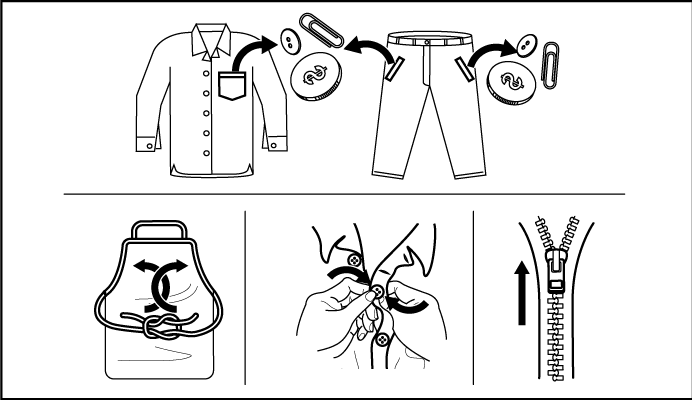
Tips: Small garments like baby socks can get stuck in the drum. Avoid that by putting them in washing bags when washing. A washing bag and other accessories can be bought on our Webshop.
Make sure your washer dryer gets fresh air
Frequency: After every use
Benefit: A hygienic, bacteria-free washer dryer gives you fresh laundry
The drum and the detergent drawer of your appliance are areas of high humidity.
Constant humidity can result in mildew and a bad smell, which can be transmitted to your laundry.
Instructions:
Air out your machine after every wash to keep your clothes smelling fresh.
Keep the door and detergent drawer slightly open to allow air to circulate.
Take care of the door and lid seal
Frequency: Every two months
Benefit: Dirt, grime and bacteria thrive behind the rubber seal. By keeping it clean, your washer dryer will stay hygienic and fresh and the seal will last longer.
Regular washing at low temperatures and too much detergent can lead to dirt, stains or greasy deposits on the seal.
Instructions:
1. Check the door seal on your washer dryer. Coins, buttons, and other small objects often end up here, so make it a point to regularly run a finger along the seal to remove any lost treasures
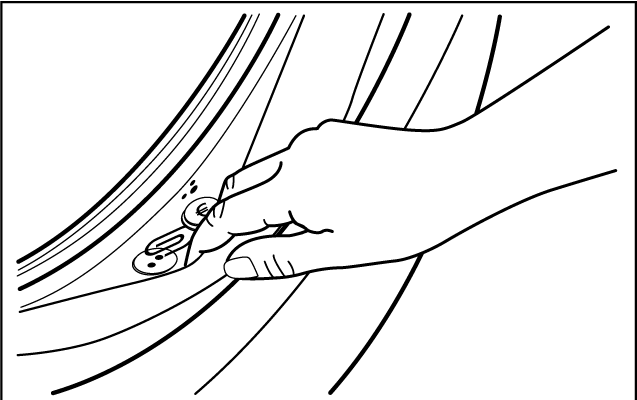
2. Clean the door seal when needed, using a clean and damp cloth inside and outside without scratching the seal surface
Check if the drum is clean and run a maintenance wash
Frequency: Once a month
Benefit: Makes your laundry stay fresh and keeps bacterial and odours away
You are a climate hero for washing at low temperatures, once a month you need to dial up the heat. A maintenance wash not only cleans the drum but will help to prevent bacterial growth inside it, which can cause bad odours and mildew.
If your machine does not have a maintenance program, run a short cotton program at high temperature (90 degrees) with an empty drum.
Some models indicate when it is time to perform a cleaning cycle (on average after 60 cycles) with an icon or text. To find out more about your specific model check your user manual.
Instructions:
1. Remove all objects from the drum
2. If your machine has AutoDose, deactivate this
3. Run an empty cotton cycle with the highest temperature, on some machines, there is a maintenance program
Regularly check if the drum if it is clean and occasionally clean it with a soft sponge. Do not use an abrasive stainless-steel cleaner or wire wool scouring pad as this may damage the surface. Wipe it dry with a clean, soft cloth.
Clean the fluff filter where present
Frequency: After every use
Benefit: Optimise drying time and prevent extensive energy consumption
If you want to achieve the best drying performance, clean the fluff filter after every use. The filter collects lint during the drying cycle, and a clogged filter leads to longer cycles and increased energy consumption.
To find out more about your specific model and how to clean the fluff filter check your user manual
Instructions for heat pump washer-dryer
- Open the drawer and remove the air filter by pulling it out
- Push the hook to open the filter
- Use a moist hand or towel to clean the primary filter
- If necessary, a vacuum cleaner can be used
- If needed take out the secondary air filter and clean it, a vacuum cleaner can be used
- Insert the secondary filter again to its positioning
- Close the fluff filter
Remove fluff from the drum
Frequency: After every use
Benefit: Prevents fluff from sticking to fabrics during the next cycle
Some types of fabric (wool, sweatshirt, sponge) can release fluff that can stick to the fabric in the next cycle. To avoid this, simply clean the empty drum, the gasket and the door with a wet cloth after the drying phase. To do a deep cleanse, run the cleaning program and clean the drain filter.
Clean the drain pump filter to avoid malfunction
Frequency: Every two months
Benefit: Makes the washer dryer perform at its best
If your machine is equipped with a drain filter, clean it every two months to avoid malfunction of your appliance or when the code E20 appears on the display.
Instructions:
Disconnect the machine from the main socket. WARNING: Never remove the filter when the machine is operating. Don't clean the pump if the water is hot, wait until the water cools down.
1. Open and remove the cover
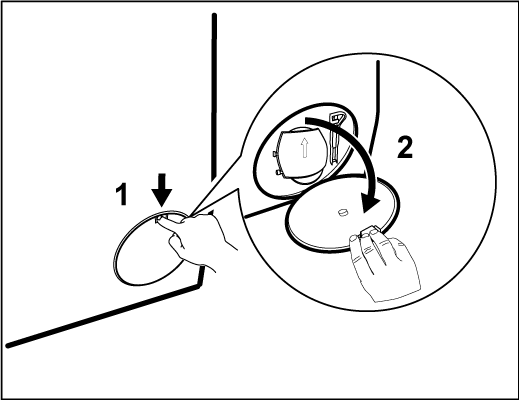
Place a shallow bowl under the drain filter

Turn the filter to the left, 180 degrees anti-clockwise, but don’t remove the filter, allow the water to fill the bowl. When the bowl is full, close the filter and empty the bowl. Then repeat as necessary until there is no more water.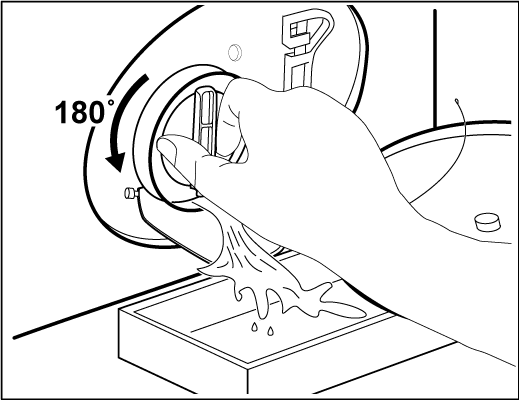
Remove the filter and clear any fluff or objects and clean the filter under a running tap.

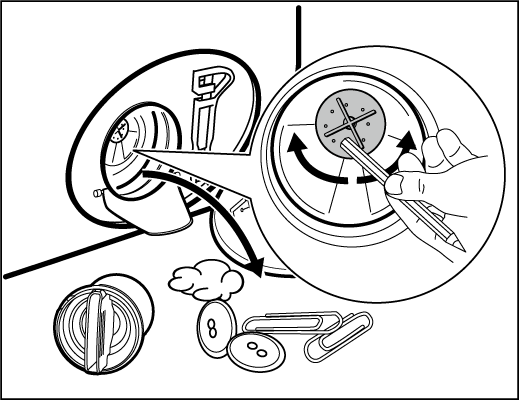
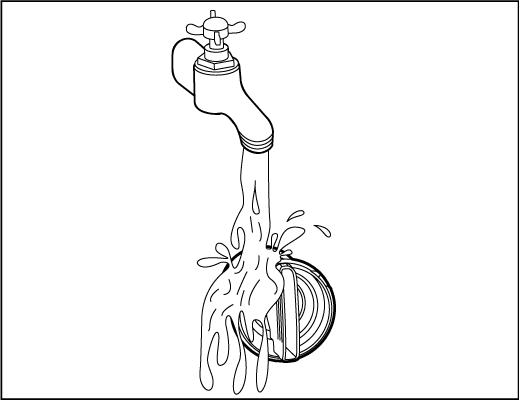
Put the filter back and turn clockwise. Make sure you tighten the filter correctly to prevent leakages. Close the drain cover.
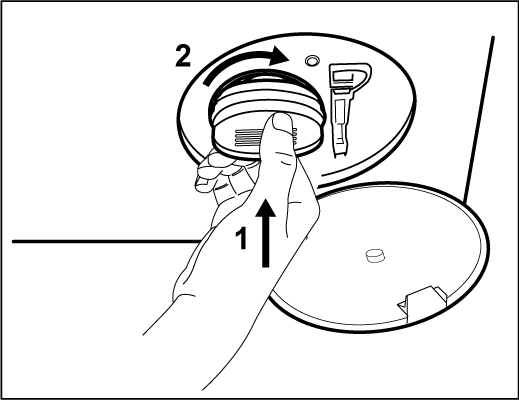
The drain pump filter can look a little different from model to model. To ensure that you handle your drain pump the correct way, please look in the “Care and cleaning” section of your machine's manual or download your user manual here
Clean the detergent drawer
Frequency: Every two months
Benefit: Preventing detergent build-up will make sure detergent is taken into the machine - and keep your laundry smelling fresh. Remove detergent residue from the drawer so that each new dose flows smoothly in the machine
Clean the detergent drawer to prevent possible deposits of dried detergent and mould formation which can build up in and around the drawer. May otherwise lead to blockages and prevent the detergent from flowing into the drum correctly.
To find out more about your specific model including detailed instructions on how to remove and clean the detergent drawer, or tanks for AutoDose models, check your user manual. Can be downloaded on this page.
Instructions:
1. Remove the drawer, usually done by easing the drawer forward until it stops, releasing a button lock and then sliding the drawer fully out
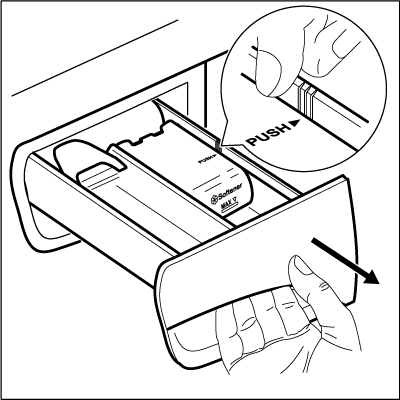
The releasing mechanism is located to the side of the detergent drawer on some machines (including the AutoDose and Universal Dose machines)
2. When the detergent drawer is being removed, clean the inside and underside with warm clean water
(Do not use detergents or bleaches to clean the drawer). Make sure to also lift off the fabric conditioner cover (if there is one) and clean it
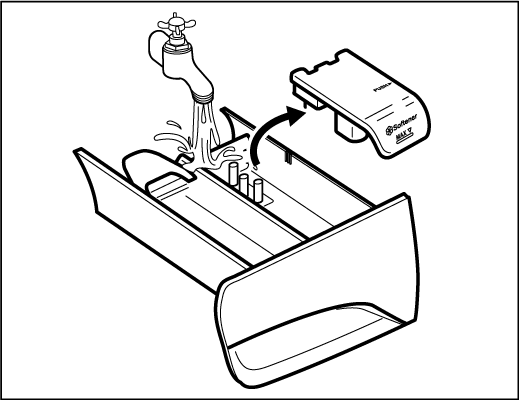
3. Use a small brush to clean the recess. Pay extra attention to the top underside of the detergent drawer opening, this is where the "shower holes" which supply the water to the dispenser are located.
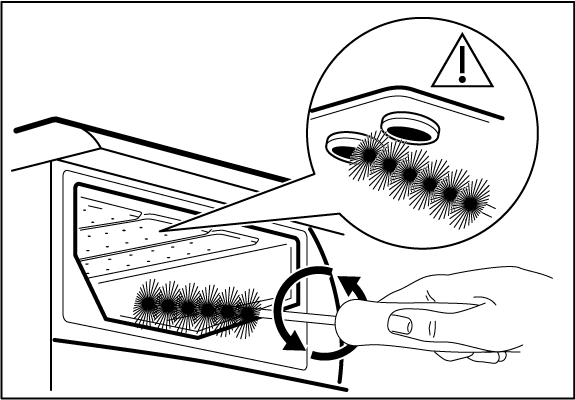
4. After cleansing the detergent drawer, run the rinsing program without any clothes in the drum.
Prevent limescale by descaling
Frequency: Every six months or more regularly if the water hardness in the area is high or moderate
Benefit: Keep your washer dryer clean for optimal performance
Limescale and rust particles can be built into your drum and reduce performance, leaving stains on your laundry and causing bad smells. If the water hardness in your area is high or median, check the drum regularly for limescale.
Even if your detergent contains water-softening agents, we recommend that you occasionally run a cycle with a washing machine descaling product in an empty drum to prevent limescale. Treat your washing machine with a deep clean twice a year to maintain optimal performance.
Some washing machines have a built-in-descaler. To find out more about your specific model check your user manual. Can be downloaded here.
If you need cleaning and maintenance products for your machine visit our Webshop.
Clean the exterior of the machine
Frequency: Occasionally
Benefit: Keep the machine free from dust, dirt and lint
Wiping down the exterior of your machine to remove lint, dust and dirt will keep it looking its best.
Your appliance needs gentle external treatment from time to time.
Clean it with mild soap and warm water to remove lint, dust and dirt and dry thoroughly.
Avoid using alcohol, perfume, solvents and chemical products to clean the washing machine as well as scouring pads and other scratching material.
If your appliance is placed next to your shower, bathtub, or washbasin you’ll need to clean it more often to avoid corrosion.